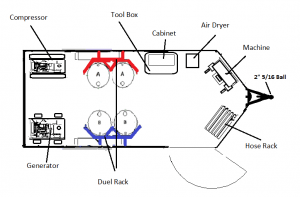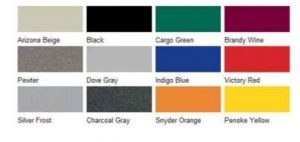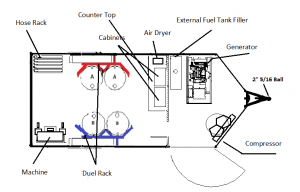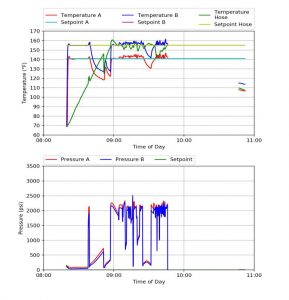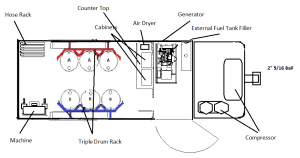In this episode of Fix-It Friday! We help you understand Polyurethane hoses and their different uses – including; heated hoses, whip hoses, scuff jacketing, and temperature sensing units (TSU).
Pressure Ratings
Not all hoses are created equal when it comes to pressure ratings. Different projects require different pressure capacities.
Spray Foam typically requires 2,000 psi low pressure hoses, unless you are spraying a roof.
Coatings always requires 3,500 psi high pressure hoses.
Whip Hoses are always 3,500 psi and work great for either high pressure or low pressure systems.
The Anatomy of PMC Hoses
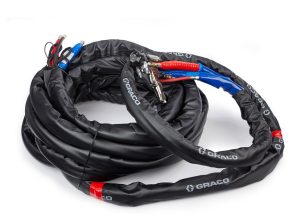
All PMC hoses come standard with an A side and B side with an air supply line, along with a heating element – all of which are insulated. In the case of a hose equipped for TSU, you will also see a purple communication line. All hoses come with the electric bullet connectors with the black line being the voltage line and where heat is drawn from the hose. The lines come capped and are made as a female and male entry point so as not to cross lines. ISO side or “A” side is marked red, while Resin side or “B” side is marked blue.
Heating
All hoses are designed to heat, for exception of the 30″ non-heated whip hoses.
Scuff Jackets
All hoses have the ability to add scuff jackets. Only the PMC whip hoses come standard with the scuff jacket included. Scuff Jackets are a necessity in protecting your hoses from snagging on nails and getting easily damaged by any debris or elements.



